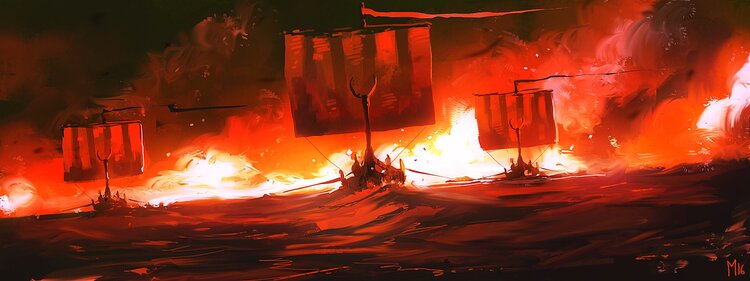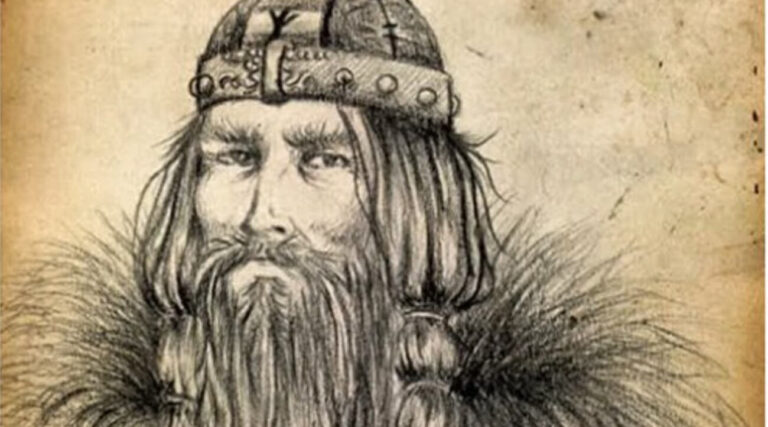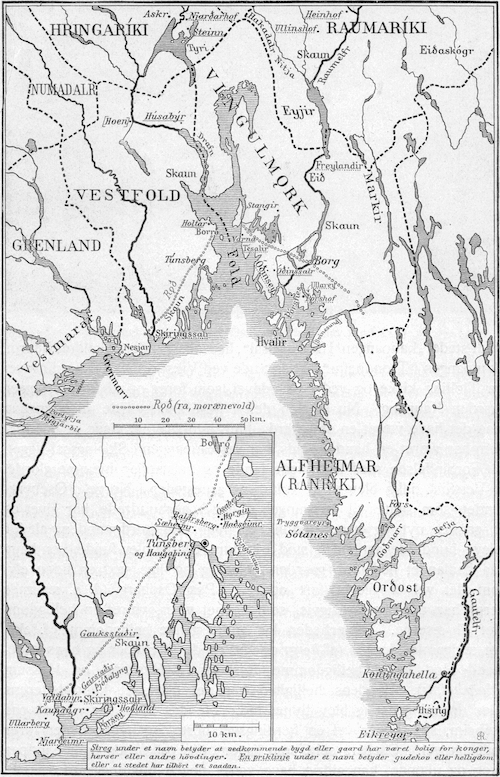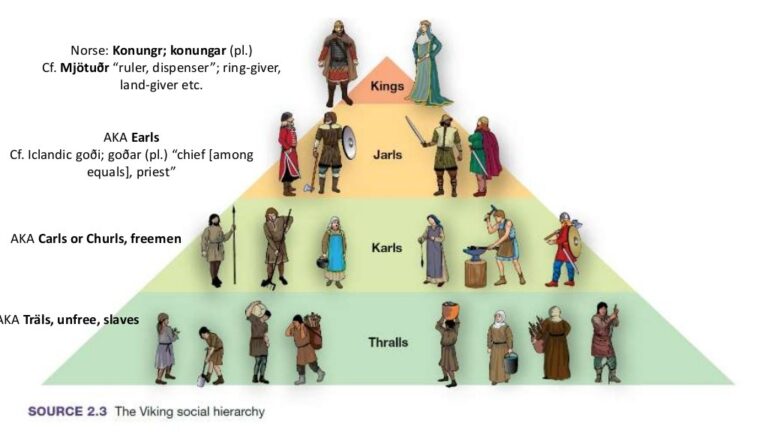In ca. AD 950, Otto I subdued King Gorm’s Denmark and forced Christianity upon his realm, but the conflict that led to this subjugation and conversion was not an isolated incident – it was the result of a centuries-long war between the Danes and Saxons. This post takes a closer look at that campaign.
The fall of the Roman Empire brought with it great upheavals across Europe. Tribes warred and fought each other for land. In Northern Europe, many of the Jute and Angle tribes moved to the island that is today England. So, too, did many Saxons. Those tribes that remained – the Danes on Zealand and Funen – and the Saxons in Northern Germany, soon warred for territory. It was during this period that the construction of the earthwork wall known as the Danevirke began. Though some modern scholars now believe it was originally designed as a shipping channel to connect the Baltic to the North Sea, its defensive utility cannot be ignored.

Franks conquer the Saxons
In the late 700s AD, Charlemagne of the Franks brought war to the Saxons, and by the late 700s, the Franks replaced the Saxons on the southern border of the Danes. Charlemagne’s war against the Saxons had two main objectives: to unify Europe under one king and to turn it into a Christian realm. It was a long, bloody conflict that greatly unnerved the Danes, who practiced the Norse religion and who did not want such a powerful southern neighbor.
In AD 804, Gudfred became king of the Danes. He reinforced the Danevirke, and in true Viking form, he went on the offensive and attacked Frankish Saxony. Though he achieved little besides angering Charlemagne, he did destroy several Slavic settlements and moved their traders to Hedeby so that he could control more trade in the region. The Franks responded with a campaign of their own, taking back the land lost to the Danes but stopping short of attacking the now-reinforced Danevirke.
The Franks created a garrison along their northern border to prevent further attacks. It is alleged that, in retaliation, Gudfred attacked Frisia with 200 ships, prompting the Frankish historian Einhard to write: ”…he did not see Frisia and Saxony as anything else but his provinces.”
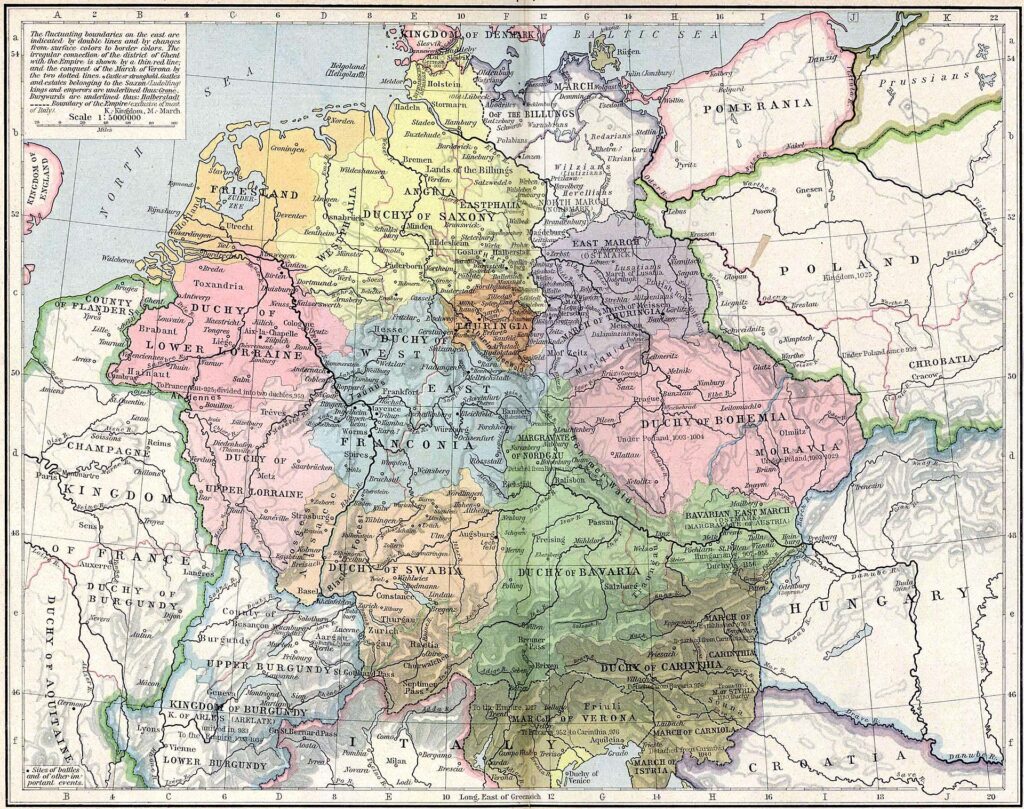
The Danes and Franks continued to war. In AD 815, Louis the Pious invaded Denmark to place a Christian claimant on the throne, but was defeated by Gudfred’s sons. Adam of Bremen tells us that in the years AD 836-837, “…the Normans [Northmen] ravaged everywhere with pirate raids and made the Frisians to pay taxes to them. At that time, they sailed up the Rhine and besieged Cologne, and up the Elbe and set fire to Hamburg.” Hamburg was sacked again by a different Danish king in AD 845.
The return of the Saxons
When Otto I (the Great) became king in AD 936, he set about re-unifying the German kingdom, which had fractured since Charlemagne’s demise. The process stirred resentment among his nobles (partially because Otto I was of Saxon origin) and caused what amounted to a civil war – a war that many of his neighbors took advantage of. Magyars and Bohemians attacked from the east. In the north, the Slavs rose up with the support of the Danes. Sometime around AD 950, Otto’s forces defeated the joint Slav-Danish forces and Otto I laid claim to their kingdoms and brought Christianity to their realms, though he allowed them to rule themselves as vassal states.

When Gorm’s son Harald became king in AD 958, he set about conquering most of what is today Denmark and expanded the control of his kingdom into Norway. It is believed that he also expanded the Danevirke and built circle forts throughout his kingdom. You can read more about Bluetooth’s industriousness on my blog here.
In the summer of AD 973 or 974, Otto I died. Harald saw his opportunity to rid himself of Ottonian pressure and with the support of his new Norwegian allies, crossed the Danish border into Saxony. Young Otto II was newly crowned at the time of the invasion. Before he could counter the Danes, he was called away to deal with a revolt led by his cousin. It took a year to put down the uprising, after which he attacked Harald’s forces on his northern border. The joint Danish-Norwegian army was driven back but repelled the Saxons at the Danevirke. According to the sagas, the Saxons then circumvented the Danish wall and attacked Jutland by sea, though just where and when they attacked is not clear. Regardless, the Saxons eventually defeated King Harald and forced him and his lords to convert to Christianity.
This time, the Slavic tribes had not allied themselves with the Danes, perhaps because they remembered the outcome of their last failed rebellion or perhaps because the Danes felt secure enough with Norwegians beside them. Or, perhaps the Slavs had better relations with Otto’s kingdom at that time. Whatever the case, they marched with the Saxon/Frank army.
Olaf tryggvason, the Saxons, and the Danes
It is in this storm of war that the subject of my latest series, Olaf Tryggvason, finds himself. It is believed that Olaf, who had become the new son-in-law of a Slavic prince Burislaf, marched with that Slavic prince in support of Otto II.
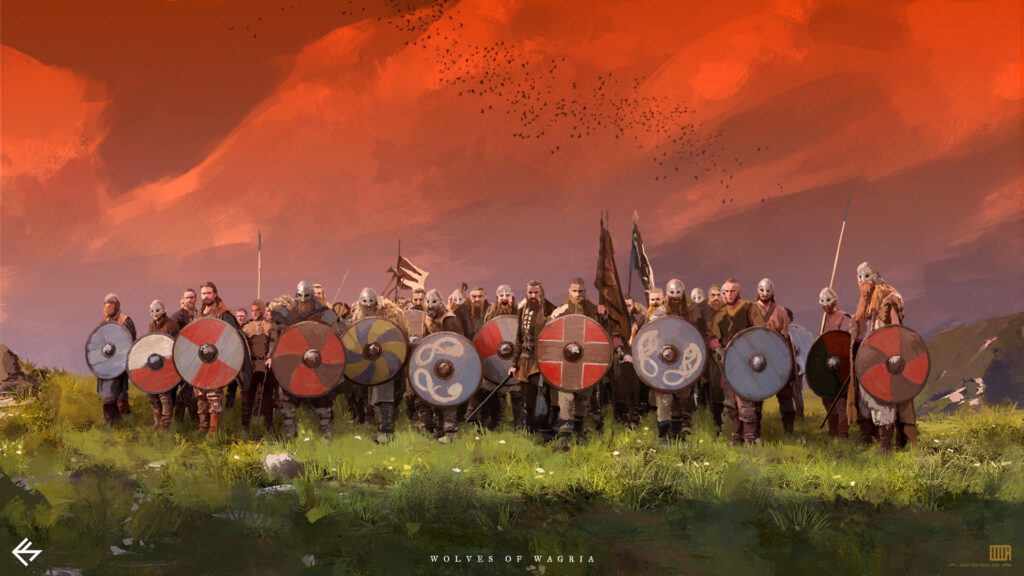
My latest book, Wolves of Wagria, tells Olaf’s tale during his time in Slavic lands and places him square in the center of a conflict that had raged for centuries between the Saxons (and Franks) and the Danes. It would rage for centuries more.
I hope you’ve enjoyed this post. If you’d like to read more posts like it, don’t forget to sign up for my newsletter.


